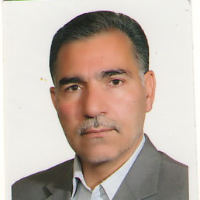Estimation of soil texture fractions under limited distribution of field observation using remotely sensed data (a case study: Marjan Watershed Rangelands)
Understanding the spatial variability of soil texture as one of the most important characteristics of soil is essential for soil and water resources management, productivity and sustainable development. However, in many cases, we face the limitation of field data due to the costs of soil analysis. The aim of this study was to estimate the soil surface texture (percentages of clay, silt and sand proportions) in lack of proper distribution of field data using satellite-based indices and regression modeling.
This study was conducted in Marjan rangelands of Boroujen. Soil samples (80 replicates) were collected from each subplot 2m×2m, and at depth 0–20 cm. Garmin GPS was used to record the coordinates of the sampling locations. Then, Soil samples from three subplots (as one plot 30m×30m) were mixed together and a sample of 500g was transferred to the laboratory. First, the soil samples were first air-dried then passed through a 2mm. Then, the particle size distributions of soil samples were analyzed following the hydrometer method. In order to predict sand proportions spatially from raw spectral bands and bands compositions of Landsat 8 satellite data including particle size index (GSI), Clay Index (CI), Band 4 to Band 7 ratio, Band 6 to Band 7 ratio and Brightness Index (BI) and physiographic variables including DEM and slope were used as auxiliary variables. To map soil texture compositions, we fitted a linear regression model between field observations and GSI index. Soil sand, silt and clay content were extracted from the predicted soil texture map.
Pearson correlation analysis showed that there are a significant relationship (p ≤ 0.05) between GSI and soil texture fractions and CI had a significant relationship with silt and sand. Between the physiographic variables, DEM had a significant correlation with clay, silt and sand, and slope with clay and sand. Therefore, these variables were selected as suitable auxiliary variables for spatial prediction of soil texture fractions using multiple regression. The central and southern parts of the study area, have a higher amount of clay and silt. Most parts of the region have clay and silt between 40-40%. Whereas, low silt and clay content are mostly observed in the north and northeast of the region. Based on sand map, north, northeast and east of the study area had the highest amount of sand (>40%) and the lowest amount of sand was observed in the central and southern parts of the region (sand percentage between 20-25%). The auxiliary variables had good accuracy in spatial prediction of soil texture compositions, especially in limited/inadequate distribution of sampled field data.
The results showed that remote sensing data and topographic properties combined with field data using multiple modeling can be used to better prediction the spatial distribution of soil texture compositions in large scale, when we are faced with data limitations. The generated maps can be used as basic information for environmental management and modeling.
-
Evaluation of multi-spectral remote sensing data capability in order to identify and differentiate burned pastures during the grazing gradient (Case study: Semi-arid rangelands of CHB province, Iran)
Ali Mohammadian *, Esmail Asadi-Broujeni, Reza Siahmansour
Iranian Journal of Forest and Range Protection Research, -
Mapping Plant Ecological Units to Quantify Ecosystem Services (Carbon Sequestration) in the Semi-Steppe Rangelands of Chaharmahal and Bakhtiari Province
Masoumeh Aghababaei*, Ataollah Ebrahimi, Aliasghar Naghipour, Esmaeil Asadi
Journal of Rangeland,



